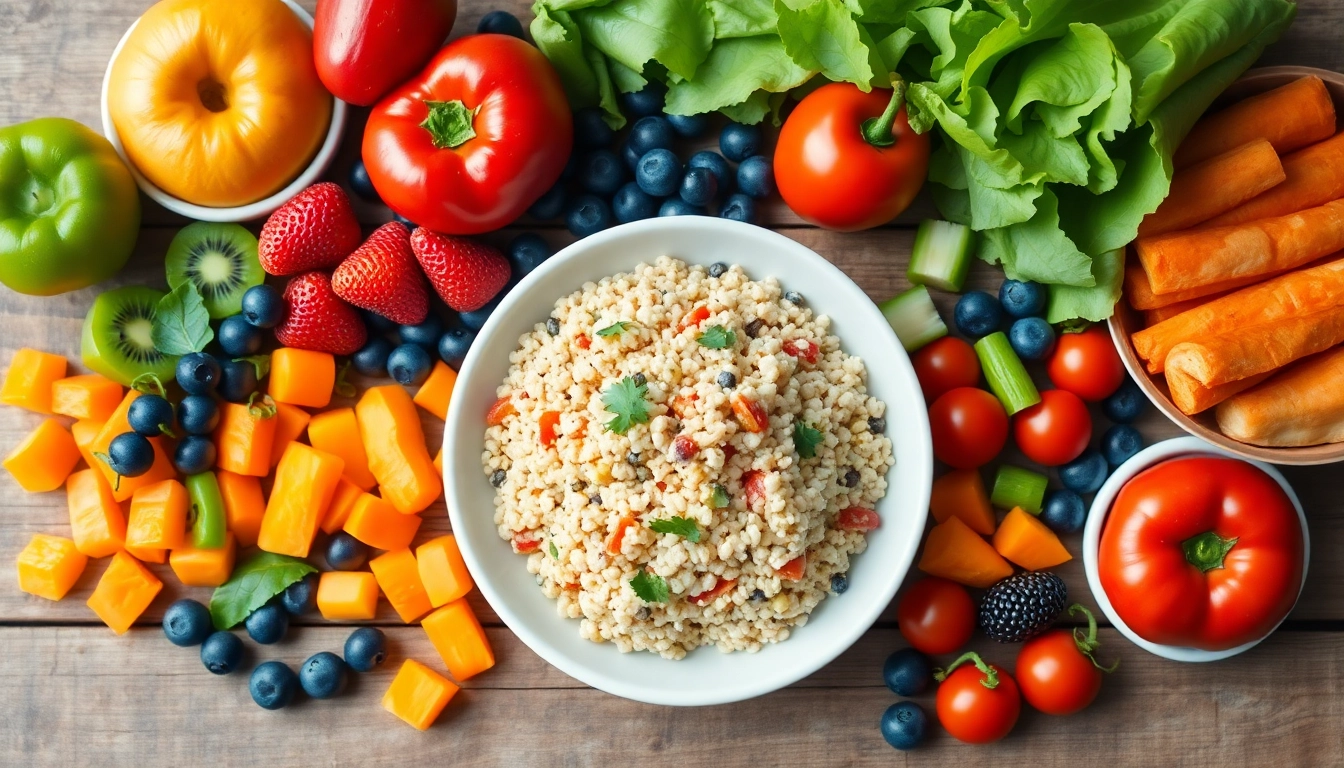Understanding Healthy Food Fundamentals
What Constitutes Healthy Food?
Healthy food is often defined by its nutritional value, incorporating a variety of essential nutrients that contribute to overall well-being. At its core, healthy food is low in unhealthy fats, sugars, and sodium while being rich in vitamins, minerals, fiber, and antioxidants. This means foods like fruits, vegetables, whole grains, lean proteins, and healthy fats should be prioritized. A well-balanced meal plan also considers the variety of food groups necessary for a nutritious diet, allowing individuals to obtain more vitamins and minerals efficiently.
The Importance of Nutrient Diversity
Eating a diverse range of foods ensures that your body receives a comprehensive spectrum of nutrients. Each type of food provides different vitamins and minerals essential for various bodily functions. For example, Healthy Food choices like leafy greens are high in vitamins K and C, while nuts are rich in vitamin E and healthy fats. Including a variety of colorful fruits and vegetables can significantly enhance nutrient intake, support metabolic processes, and reduce the risk of chronic diseases.
Common Misconceptions About Healthy Foods
There are many myths associated with healthy foods. One prevalent misconception is that healthy foods are bland and unappealing. In reality, healthy eating can be both diverse and flavorful, encompassing a wide range of dishes and cuisines. Another myth is that healthy foods are always expensive. While some organic or specialty items can incur a higher cost, incorporating seasonally local produce, bulk grains, and plant-based proteins can often lead to cost-effective meals.
Incorporating Healthy Food into Your Daily Diet
Meal Planning for Healthy Eating Success
Meal planning is a powerful tool for ensuring a healthy diet. By planning meals ahead of time, you can ensure that your grocery list contains the foods you need and reduce impulsive, unhealthy purchases. Start by selecting some healthy recipes you would like to try for the week and create a shopping list based around those meals. Consider preparing larger batches of food to have healthy options readily available. Utilizing tools like meal prep containers can further streamline this process.
Simple Healthy Food Recipes to Try
Here are a few simple healthy recipes that require minimal time and effort:
- Quinoa Salad: Mix cooked quinoa with diced cucumber, cherry tomatoes, parsley, and a squeeze of lemon for a refreshing salad.
- Stir-Fried Vegetables: Sauté your choice of vegetables like bell peppers, broccoli, and carrots in olive oil with garlic for a quick side dish.
- Baked Salmon: Season salmon fillets with herbs and lemon, bake at 400°F for 15-20 minutes, and serve with steamed asparagus.
Strategies for Eating Healthy on a Budget
Eating healthy doesn’t have to break the bank. Here are some strategies to consider:
- Buy seasonal produce, which is often less expensive and fresher.
- Choose frozen fruits and vegetables as they retain nutrients and can be more economical.
- Purchase in bulk and consider meal prepping to minimize waste and maximize savings.
Exploring Healthy Foods: Top Choices
Fruits and Vegetables: Nature’s Powerhouses
Fruits and vegetables are key components of a healthy diet. They are low in calories yet high in essential nutrients, making them perfect for weight management. Incorporating a variety of colors in your diet can ensure a wide range of nutrients. Dark leafy greens like spinach and kale are rich in iron and vitamins, while berries are packed with antioxidants that combat oxidative stress.
Whole Grains: Your Energy Source
Whole grains are an excellent source of energy as they contain fiber, which aids in digestion and provides long-lasting energy. Options like brown rice, quinoa, and whole-wheat products can help with satiety and improve digestive health. Switching from refined to whole grains can also help in regulating blood sugar levels, making them a wise choice for maintaining energy levels throughout the day.
Proteins: Lean Options for Health
Proteins are vital for muscle repair, immune function, and overall health. Opt for lean protein sources like chicken, turkey, legumes, and fish, which provide the necessary amino acids without excessive saturated fats. Plant-based proteins such as lentils and chickpeas are also excellent choices, often lower in calories and rich in fiber.
The Role of Healthy Food in Disease Prevention
How Healthy Foods Boost Your Immune System
Healthy foods play a critical role in bolstering the immune system. Nutrient-rich foods support the body’s defenses against infections. Foods high in vitamins A, C, and E, along with zinc and selenium, are particularly beneficial. Citrus fruits, nuts, seeds, and leafy greens help to maintain a robust immune response and overall health.
The Connection Between Diet and Chronic Illness
There is a strong correlation between diet and chronic illnesses such as heart disease, diabetes, and obesity. Diets high in processed foods, sugars, and unhealthy fats contribute to inflammation and insulin resistance. On the other hand, a diet rich in whole foods can reduce the risk of these diseases by promoting healthy body weight and metabolic function.
Building a Stronger Heart with Healthy Foods
A heart-healthy diet includes foods that help maintain healthy cholesterol levels and blood pressure. Incorporating fatty fish like salmon, fruits, vegetables, whole grains, and nuts can have protective effects on heart health. The Mediterranean diet, known for its emphasis on healthy fats, fruits, and vegetables, is often recommended for its cardiovascular benefits.
Measuring Success: Assessing Your Healthy Eating Journey
Setting Achievable Healthy Food Goals
Goals are crucial for maintaining a healthy eating pattern. Start with simple, measurable goals, such as increasing daily vegetable intake or reducing sugary drinks. As you achieve these small goals, you can set new targets for yourself. This stepwise approach helps in creating sustainable habits and fostering a positive relationship with food.
Tracking Your Health Progress
Monitoring your diet and health progress can be highly beneficial. Consider keeping a food diary or using mobile apps to track your intake and make adjustments as necessary. Regularly evaluate how certain foods affect your mood, energy, and overall health to better understand your body’s responses.
Resources for Continued Healthy Eating Education
Continual learning about healthy eating can enhance your dietary choices. Numerous resources are available, including food blogs, nutrition websites like the Healthline, and community workshops. Engaging with nutritionists or joining local healthy eating groups can also enrich your knowledge and motivation.

